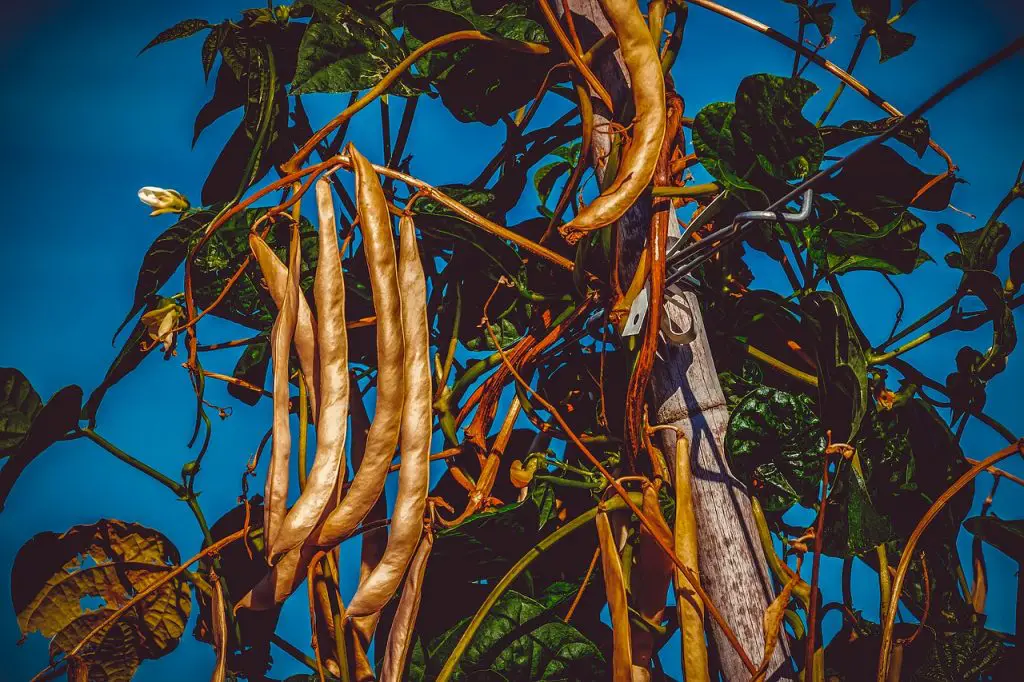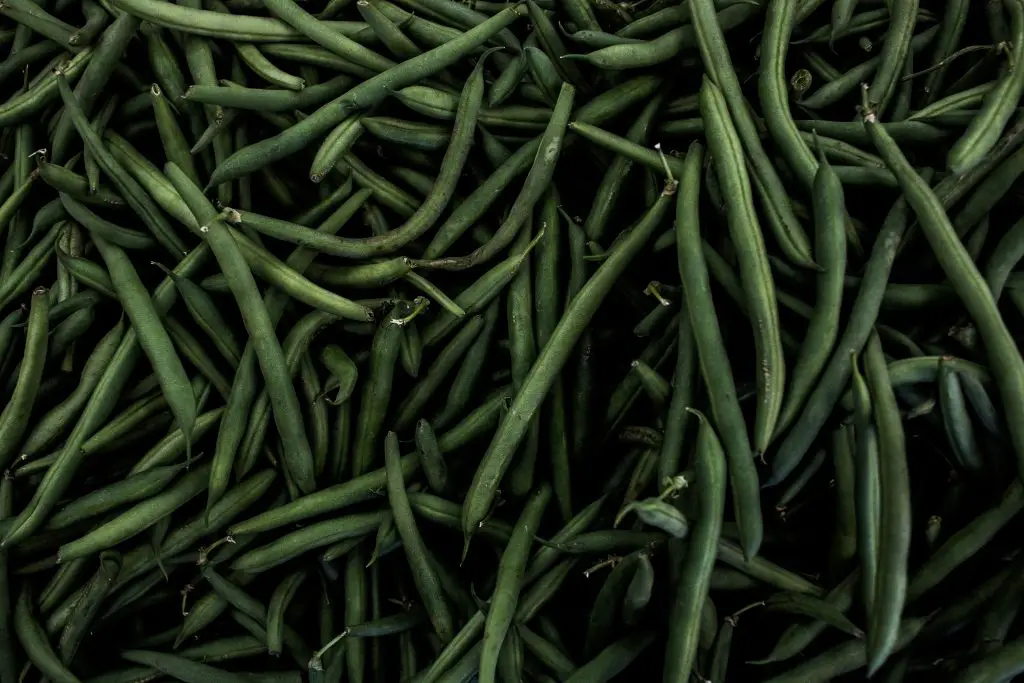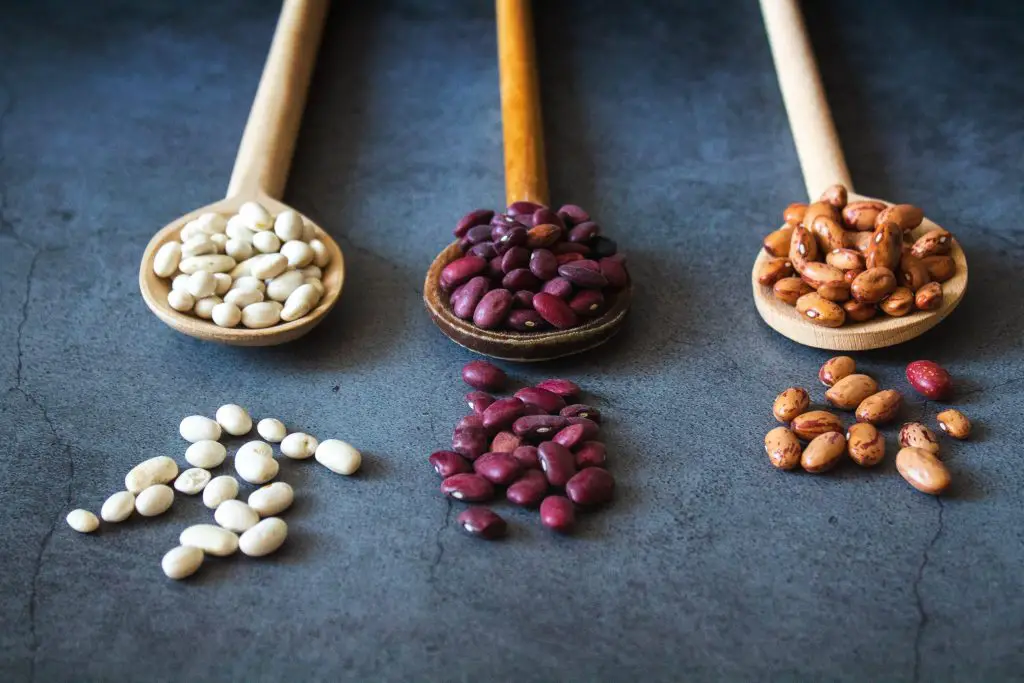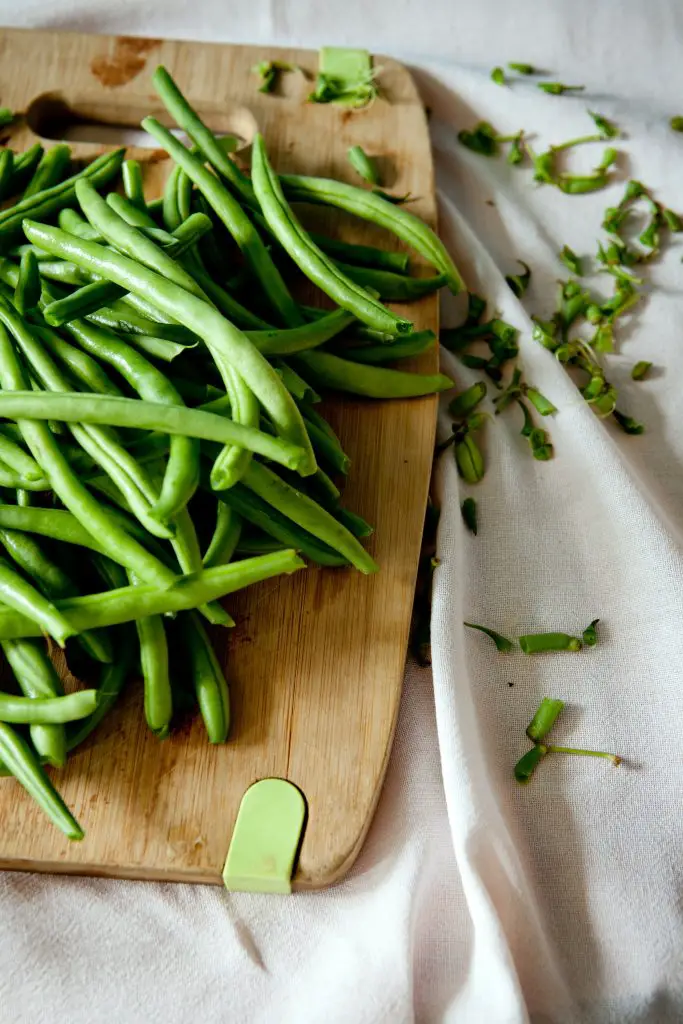What is The Difference between Bush Beans and Pole Beans? There are many varieties of Beans that are available from seed suppliers, such as Seeds Now today, however, there are a wide variety of names used to describe the Beans, which includes Snap Beans, Runner Beans, Climbing Beans, Pole Beans, Dwarf Beans, Bush Beans, Green Beans, and French Beans to name a few. With all these terms, it is difficult to know what you are planting in your garden.
Beans broadly fall into two main categories Bush Beans (also known as Dwarf Beans) and Pole Beans sometimes referred to as climbing beans. Bush Beans grow to a height of around (12 inches ) 30 cm and will produce a harvest of approximately 3.5 to 5 ounces (100-150 grams) per plant. Pole Beans, are much taller reaching a height of 6 to 7ft and require a trellis or support structure to grow on. They are generally a more prolific producer of Beans than the dwarf varieties producing 7 to 9 ounces (250-300 grams) of Beans in a season.
Within these two categories, Beans are further categorized by the shape, color, appearance, structure, and maturity of harvest. Beans can be harvested as immature pods, sometimes referred to as Snap Beans, which are typically found in the fresh produce section of the supermarket. They can also be harvested as mature pods, which is generally done to obtain the Bean itself as the harvest. The Beans are often dried for storage, and the pods are discarded as they become tough, stringy, and increasingly inedible with age.
To read more about the different varieties of beans visit our vegetable database which has over 90 different vegetables listed and thousands of varieties to help you find just the right variety.
What is Difference between Runner Beans and Pole Beans?
Within the Climbing Bean family, there is a group known as Runner Beans. The Runner Beans sometimes referred to as the 7-Year Bean, differ from other pole beans, because they are perennial plants rather than annual plants. They produce a climbing vine every year and then retreat back to ground level at the end of the season, to avoid frosts before appearing the following season.
The other common feature that differs for Runner Beans, is the shape of the pod. They tend to have a flat broad pod with a relatively rough texture that is generally tougher than other climbing beans. Like other varieties of Beans, they can be harvested as immature pods for eating whole or they can be allowed to mature to increase the size of the Beans.

What are French Beans and Where Do They Come From?
French Beans are just the common Green Bean that is found every day in your local supermarket. They are known by many other names mentioned earlier which include String Beans, Snap Beans, Baguio Beans, and the French name Haricot Vert.
They were introduced to Europe by the Spanish and Portuguese, who brought them back from Central and South America. It was not until the late 16th Century that Green Beans made their way to France via the Conquistadors. It did not become a widely used vegetable in Europe, until the 19th Century, when the French made the Bean a household vegetable, hence the name. Around the same time, the first String-less Green Bean was developed, making an easier vegetable to cook with as the name of one of the better known heirloom varieties from that era can attest, ‘The Lazy House Wife – Climbing Bean’.

How to Grow Beans
All varieties of Beans are frost-tender plants that require warm conditions to thrive. They require well-drained soil and plenty of organic matter to produce a large crop. The ideal pH for growing beans is 6.0 to 6.5. To learn more about testing and adjusting the pH of the soil go to https://planyourpatch.com/why-is-ph-important-in-soil/.
They can be planted directly into the soil 2-3 cms (1 inch) below the surface, in Spring after the risk of frost has past. Temperatures of at least 15°C (60°F) are ideal.
Beans prefer a warm sunny spot with at least six hrs of sun per day. Pole Beans require a support structure that is at least 1.8m (6 feet) high, as the vines can grow 1.5 to 3.0 m (5 to 10 feet) tall. The Beans should remain moist throughout the growing season, but cannot tolerate soggy soils.
Harvesting of Beans can begin as soon as the pods are full and swollen typically; this occurs 90-100 days after the seed has been sown. In harvest, season Beans should be picked every three to five days, to avoid harvesting older Beans which can be woody and bitter. Consistent harvesting will also encourage new flowers and promote longer living vines.
Saving Beans Seeds
Bean seeds can be saved easily by allowing the pods to dry out at the end of the season. As there is often many pods left on the dead plant they simply need to be removed from the decayed vines as the plant is removed from the garden. They then need to be dried prior to storage.
However, this can only be done for open-pollinated varieties, as F1 hybrid seeds will produce plants that are not “true to type”. To learn more about the differences between hybrid, open-pollinated and heirloom seeds click on https://planyourpatch.com/what-is-an-f1-hybrid-seed/.
How to Store Beans
Storing Dried Beans
Dried Beans have a long storage life and will last up to a year in food-safe storage containers with tight-fitting lids to limit the access of oxygen. Before sealing in the containers, the Beans need to be allowed to thoroughly dry out. Store in a cool, dry place out of direct sunlight.

Storing Bean Pods
The pods are best used fresh, but like many other vegetables, Green Beans can be frozen but they will require blanching before freezing. Blanching is a process that involves boiling vegetables in water, before cooling them quickly in a large quantity of cold water to stop the cooking process. The blanching process the stops enzyme activity within the Bean, which results in a loss of flavour, colour, and texture. If you are unfamiliar with how to blanch, the steps are provided below;
- Step 1: Wash the Green Beans and Remove the Ends. If your Green Bean variety has a stringy fibre that runs throughout the bean pod, make sure to remove it. If you choose, the Beans can be cut into smaller pieces; however, this depends on what type of recipe you want to use the Beans for in the future.
- Step 2: Blanch the Green Beans by bringing a large pot of water to boil. Fill a large bowl with ice water, just prior to starting the blanching process. Once the pot is boiling, add your Green Beans into the water. Cook the Beans for 2 minutes, then remove them from the pot and immediately plunge the Beans into the ice water to cool for around the same amount of time as the blanching, and then drain thoroughly.
- Step 3: Prepare the Beans for Freezing, Then Freeze. Pack all of your blanched Green Beans into plastic bags or a suitable container. Ensure each bag or container is labelled with dates.

Another option for storage is to pickle Green Beans. An example of a recipe from spruceeats.com is provided below;
Ingredients
- 4 pounds whole Green Beans (about 4 quarts)
- 1/4 teaspoon Crushed Hot Red Pepper (per pint jar)
- 1/2 teaspoon Mustard Seeds (per pint jar)
- 1/2 teaspoon Dill Seeds (or 1 to 2 fresh or frozen dill heads) (per pint jar)
- 1 small clove Garlic (per pint jar)
- 5 cups Vinegar
- 5 cups Water
- 1/2 cup pickling salt
Steps to Make It
- Sterilise the jars and keep them in the hot water until you are ready to fill them.
- Put the flat lids in a saucepan and cover with water. Bring just to a simmer. Reduce the heat to the lowest setting and keep them hot until you are ready for them.
- Fill a large canner with water and bring to a boil.
- Meanwhile, trim and wash the Green Beans thoroughly. Drain them and cut into lengths to fill 1-pint jars (preferably wide-mouth jars).
- Pack Beans into sterilized, hot jars. Add the hot pepper, mustard seed, dill seed, and garlic to each jar.
- In a large saucepan combine the vinegar, water, and salt and bring to a boil. Pour the boiling liquid over the Beans, leaving 1/2-inch of headspace. Clean the jar rims and threads with a damp clean cloth or paper towel. Centre the lids on the jars and screw on the bands. Do not over-tighten.
- Place the jars in the canner rack and lower into the gently boiling water. If the water does not come up to at least 1 inch above the jars, add more hot water.
- When the water returns to a boil with jars in it, cover the canner and boil gently for 5 minutes. Remove the cover and let the jars stand for 5 minutes.
- Remove the jars from the canner to a rack or heavy towel and let them cool. Do not tilt, tighten, or turn them over.
- After 24 hours, check the jars to make sure they sealed. Remove the bands, wipe the jars clean, label and store in a cool, dark place. Refrigerate any unsealed jars and use within a few days. Alternatively, unsealed jars may be reprocessed by heating the liquid again, following recipe instructions, and canned in sterilized jars with new lids (discard the old lid that did not seal properly).
Related Articles
How many green beans does a plant produce?
Are Bush or pole beans better?
12 Tips To Boost Your Garden Output
When Should I Plant Winter Vegetables?
